Growing and Shrinking Egg
We’ve found a method to take our famous Naked Egg experiment to a new level. By dropping your Naked Eggs into Karo corn syrup or […]
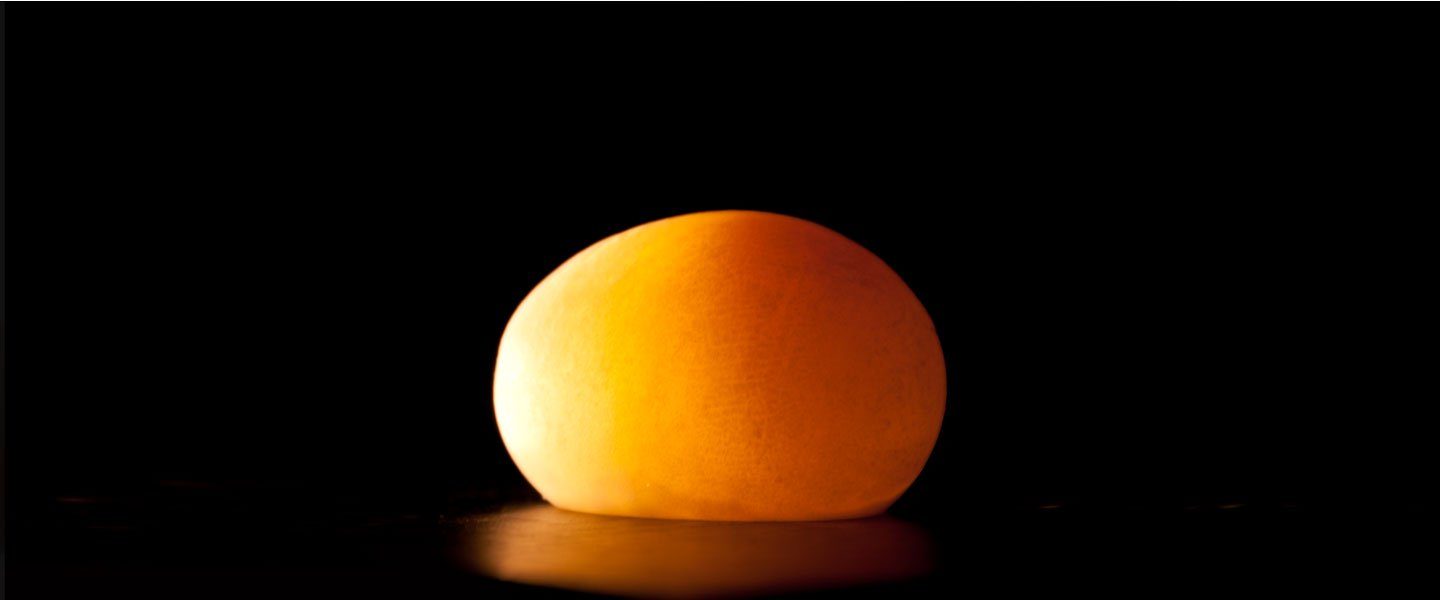
This experiment answers the age-old question, “Which came first, the rubber egg or the rubber chicken?” It’s easy to make a rubber, or “naked,” egg if you understand the chemistry of removing the hard eggshell. What you’re left with is a totally embarrassed, naked egg and a cool piece of science.

Place the egg in a tall glass or jar and cover the egg with vinegar.
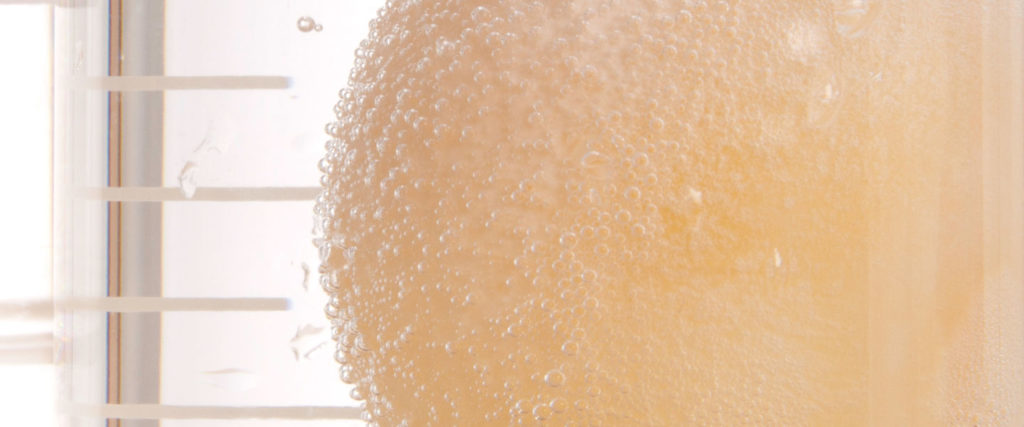
Look closely at the egg. There will likely be tiny bubbles forming on the shell.
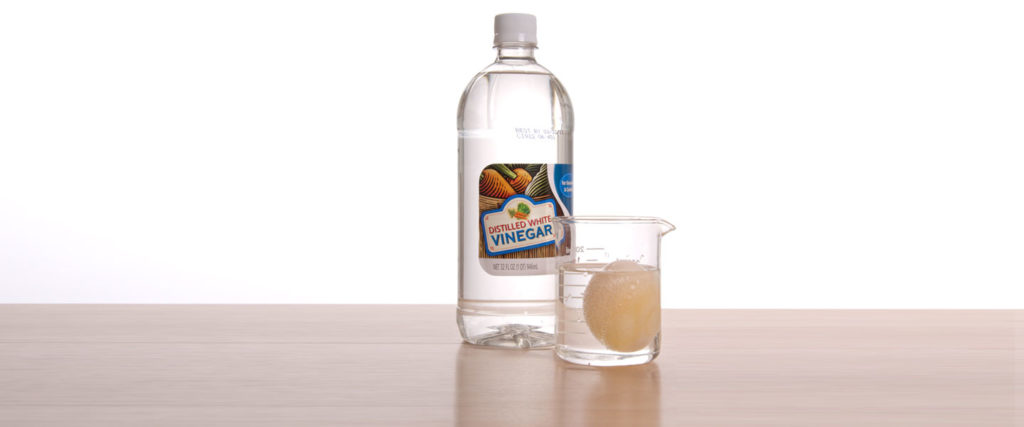
Leave the egg in the vinegar for a full 24 hours.
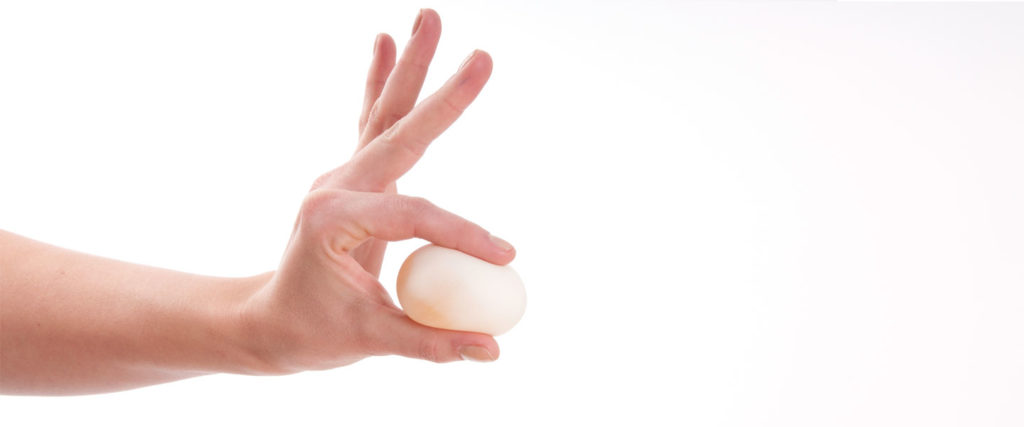
Change the vinegar on the second day. Carefully pour the old vinegar down the drain and cover the egg with fresh vinegar. Place the glass with the vinegar and egg in a safe place for a week—that’s right, 7 days! Don’t disturb the egg but pay close attention to the bubbles forming on the surface of the shell (or what’s left of it).
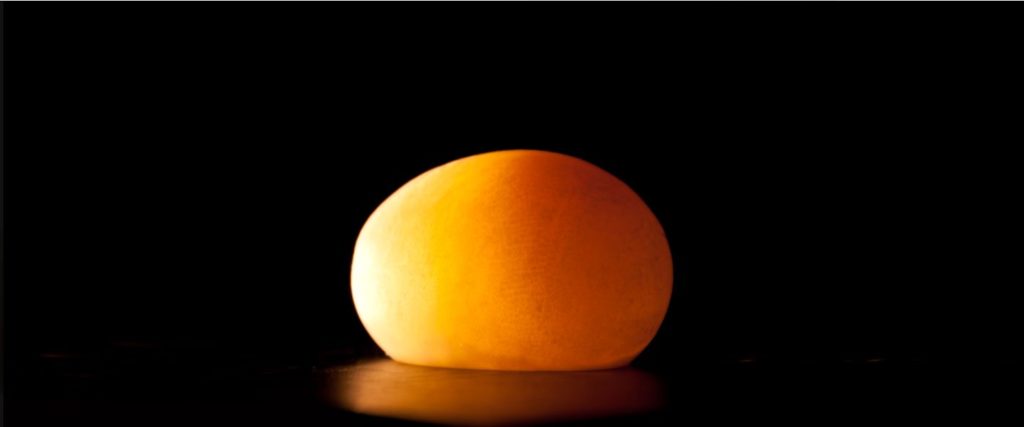
One week later, pour off the vinegar and carefully rinse the egg with water. The egg looks translucent because the shell is gone! The only thing that remains is a delicate membrane of the egg surrounding the white and the yolk. You’ve successfully made an egg without a shell. Okay, you didn’t really make the egg (the chicken made the egg), you just stripped away the chemical that gives the shell its strength.
Let’s start with the bubbles you saw forming on the shell. The bubbles are carbon dioxide (CO2). Vinegar is an acid called acetic acid (CH3COOH), and white vinegar from the grocery store is usually about 4% acetic acid and 96% water. Eggshells are made up of calcium carbonate (CaCO3). The acetic acid in the vinegar reacts with the calcium carbonate in the eggshell to make calcium acetate plus water and carbon dioxide that you see as bubbles on the surface of the shell.
The chemical reaction looks like this . . .
2 CH3COOH + CaCO3 = Ca(CH3COO)2 + H2O + CO2
Acetic acid + Calcium carbonate = Calcium acetate + Water + Carbon dioxide
The egg looks translucent when you shine a flashlight through it because the hard outside shell is gone. The only part that remains is the thin membrane called a semipermeable membrane.
You might have noticed that the egg got a little bigger after soaking in the vinegar. Here’s what happened…Some of the water in the vinegar solution (remember that household vinegar is 96% water) traveled through the egg’s membrane in an effort to equalize the concentration of water on both sides of the membrane. This flow of water through a semipermeable membrane is called osmosis.
If you take your naked egg and place it in a glass filled with corn syrup, the egg will shrivel. Since corn syrup has a lower concentration of water than an egg does, the water in the egg moves through the membrane and into the corn syrup to equalize the water concentration levels on both sides.
Change a Variable
Do organic or free-range eggs have an eggshell that is stronger or weaker than generic eggs? What about really fresh eggs compared to those that have been around for a while? Conduct your own tests on several different kinds of eggs all at once to observe any differences in the time required for the vinegar to dissolve the shells.
Try using concentrated vinegar instead of traditional vinegar. Concentrated vinegar is about four times the strength of traditional household vinegar. If you really want to cut down on the time it takes for the eggshell to disappear…and you’re chemistry teacher…try using 1 molar hydrochloric acid. Be careful—this is really strong stuff!
Bouncing Eggs
Here’s another idea. Put an egg in a separate glass. Cover the egg with vinegar. Allow the egg to sit in the vinegar for 24 hours. After 24 hours, pour out the vinegar and take the egg out of the glass. Drop the egg into the sink from a height of 3 inches. What happens? Continue dropping the egg from different heights (all drops should be done over the sink). What is the greatest height that you can drop the egg from before the egg goes splat? Can you measure the height of the bounces
Secret Message Eggs
You’ll totally freak someone out by making a message appear on an egg. Start by boiling an egg in a saucepan on the stove for 10 minutes. Remove the egg from the pan and let it cool. Use a crayon or small candle to write on the eggshell. Write anything you want—your name, a design, a symbol—just like you were going to make wax designs on an Easter egg. Then place the egg in a glass filled with vinegar. Bubbles will begin to form on the surface of the egg. When the bubbling stops, pour out the vinegar and cover the egg with fresh vinegar. When the second round of bubbling has stopped, remove the egg from the glass of vinegar and rinse it off with cool water. Rub your fingers over the surface of the egg. What do you feel? The eggshell is gone, but you should be able to decipher what you wrote or drew on the eggshell. Wax does not react with acid (vinegar), so underneath your wax design, the eggshell remains intact revealing your design.
WARNING! IMPORTANT SAFETY RULES
Always wash your hands well with soap and water after handling raw eggs. Some raw eggs contain salmonella bacteria that can make you really sick!